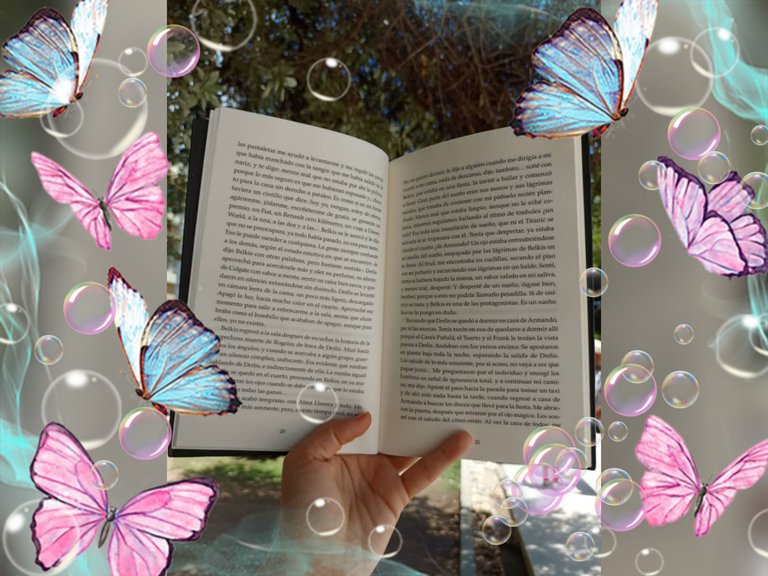The stories in Raul Cazal's Everything has its end threw me off, because it mixes realism with avant-gardism, projecting surrealistic scenes, a kind of fantastic literature that borders on the absurd. I did not have the honor of knowing the pen of this author until the day this book came into my hands and I was surprised by his aesthetic proposal. With a well-constructed prose he appropriates the language of the slums and suburbs of Caracas to insert it in his stories, in this way he manages to transport us to a world that suggests complex images, even meaningless, but that transcend in the same way. The reader must let go of his notion of logic to make room for a narrative that bets on innovation, perhaps focused on the avant-garde current imposed by the poetry of César Vallejo.
In this work, whose title refers to a song popularized by Hector Lavoe, he inserts fragments of musical themes in most of the stories, so it requires a reader who knows how to relate the context, the references and what is proposed in the narratives. Each story is a closed structure, it has a beginning, a development and a denouement, but Cazal uses the strategy of repeating the names of characters, their characteristics, settings and atmosphere, to promote an intertextuality, which is illusory because the reader, mistakenly believing that one story is connected to another, will end up with more questions than answers and very far from the meaning of each story.

To support my criteria, I selected three stories, the first one is entitled Beastly sound, and precisely in its story it presents references to the theme and the 1971 Richie Ray and Bobby Cruz album. Here we find a protagonist narrator (Derlis) who has lost his memory. The strategy works to unfold and narrate the same event as if they were two characters. These lines are full of mystery, confusion, desire and a dreamlike world that is presented as real. In its first part, the nonsensical has a place, betting in turn for an accomplice reader who is able to project in his mind the images that the words lead him to conceive. The narrative focus also shifts from first to second person, provoking doubts, partly to generate the sense of chaos present in nightmares and in individuals with dual personalities.

On the other hand, No one can stand you presents a story that begins at the end, an interesting cyclical structure that immerses us in the story of a man who wants to be a singer, but given the impossibility of turning his dreams into reality -he lacks talent- he begins to rave and puts into practice some crazy ideas to "murder his voice". This story, with irony and black humor, reflects on human fragility and how incongruous one can be in order to force situations. Although it sticks to surrealism to present somewhat incoherent proposals, the message is that everyone is born with talents and limitations, and one cannot reverse the shortcomings only with desires.

The last story Death should be taken with soda water depicts two teenagers lacking personality who are looking for meaning in their lives. As with the other stories, the author presents us with samples of urban subculture settled in Caracas and in this story, where the discourse is saturated with metaphors and rhetorical figures, the young people want to escape from their suffocating daily life, escaping from reality. The narrative focus is in the first person and is perceived as a melancholic, depressive and severely emotionally disturbed subject, practically described as a boy belonging to the Emo culture, but here the author exaggerates it to the point of parody. The story has some thought-provoking lines that I found captivating: "A man who thinks he wants to do something and does not have the slightest hope that his longing will be fulfilled is definitely dead". The message is forceful for young people who burn their best years thinking of a future, living the present without purpose, as if they do not value their existence.

Raul Cazal was a great challenge, but I can say that I liked this different proposal that led me to explore new universes, where the absurd and the fantastic are raised as flags to originate stories.Everything has its end is a work that has an extravagant charm and needs a reader who is willing to live it, but above all, to enjoy this journey.
Versión en EspañolLos cuentos de la obra Todo tiene su final de Raúl Cazal me descolocaron, porque mezcla el realismo con el vanguardismo, proyectando escenas surrealistas, una especie de literatura fantástica que bordea lo absurdo. No tenía el honor de conocer la pluma de este autor hasta el día que este libro llegó a mis manos y me sorprendí por su propuesta estética. Con una prosa bien construida se apropia del lenguaje de los barrios marginales y suburbios de Caracas para insertarlo en sus relatos, de esta forma logra transportarnos a un mundo que sugiere imágenes complejas, inclusive carentes de sentido, pero que de igual manera trascienden. El lector debe desprenderse de su noción de lógica para dar cabida a una narrativa que apuesta por la innovación, enfocada quizás en la corriente vanguardista impuesta por la poesía de César Vallejo.
En esta obra, cuyo título hace referencia a una canción popularizada por Héctor Lavoe, justamente inserta fragmentos de temas musicales en la mayoría de los relatos, asi que requiere de un lector que sepa relacionar el contexto, los referentes y lo que se plantea en las narraciones. Cada cuento es una estructura cerrada, posee un inicio, un desarrollo y un desenlace, pero Cazal utiliza la estrategia de repetir nombres de personajes, sus características, escenarios y atmósfera, para propiciar una intertextualidad, que resulta ilusoria porque el lector, al creer erróneamente que un relato está conectado con otro, terminará con más preguntas que respuestas y muy lejos del significado de cada cuento.

Para sostener mi criterio, seleccioné tres cuentos, el primero se titula Sonido bestial, y precisamente en su historia presenta referencias al tema y al disco de Richie Ray y Bobby Cruz de 1971. Acá encontramos a un narrador protagonista (Derlis) que perdió la memoria. La estrategia funciona para desdoblarse y narrar un mismo hecho como si fueran dos personajes. Estas líneas están llenas de misterio, confusión, deseo y un mundo onírico que se presenta como real. En su primera parte, lo disparatado tiene cabida, apuesta a su vez por un lector cómplice que sea capaz de proyectar en su mente las imágenes que las palabras le llevan a concebir. El foco narrativo también pasa de primera a segunda persona, provocando dudas, en parte para generar la sensación de caos presente en las pesadillas y en individuos con doble personalidad.

En cambio en No hay quien te aguante se presenta un relato que empieza por el final, una estructura cíclica interesante que nos sumerge en la historia de un hombre que quiere ser cantante, pero ante la imposibilidad de convertir sus sueños en realidad -carece de talento- empieza a desvariar y pone en práctica algunas ideas descabelladas para "asesinar su voz". Este relato, desde la ironía y el humor negro, reflexiona sobre la fragilidad humana y lo incongruente que se puede llegar a ser con tal de forzar situaciones. Aunque se apega al surrealismo para presentar propuestas un tanto incoherentes, el mensaje es que cada quien nace con talentos y limitaciones, y no se pueden revertir las carencias solamente con deseos.

El último cuento La muerte hay que tomársela con soda nos dibuja a dos adolescentes carentes de personalidad que buscan sentido a sus vidas. Al igual que con las otras historias, el autor nos va presentando muestras de subcultura urbana asentadas en Caracas y en este relato, donde el discurso está saturado de metáforas y figuras retóricas, los jóvenes desean escapar de su asfixiante cotidianidad, evadiéndose de la realidad. El foco narrativo está en primera persona y se percibe como un sujeto melancólico, depresivo y con severos trastornos emocionales, prácticamente es descrito como un chico perteneciente a la cultura Emo, pero acá el autor lo exagera hasta bordear la parodia. El cuento tiene unas líneas para reflexionar que me parecieron cautivadoras: "Un hombre que piensa que quiere hacer algo y no tiene las mínimas esperanzas para que se le realice su anhelo, definitivamente está muerto". El mensaje es contundente para los jóvenes que queman sus mejores años pensando en un futuro, viviendo el presente sin un propósito, como si no valoraran sus existencias.

Raúl Cazal fue un gran reto, pero puedo decir que me gustó esta propuesta diferente que me llevó a explorar nuevos universos, donde lo absurdo y lo fantástico se alzan como banderas para originar historias.Todo tiene su final es una obra que tiene un encanto extravagante y necesita a un lector que esté dispuesto a vivirla, pero sobre todo, a disfrutar este viaje.
✓Photos from my personal gallery, edited with Fotocollage.
✓Text translated with DeepL.
📚📚📚📚📚📚📚📚📚📚📚
✓Fotos de mi galería personal, editadas con Fotocollage.
✓Texto traducido con DeepL.
Posted Using INLEO
